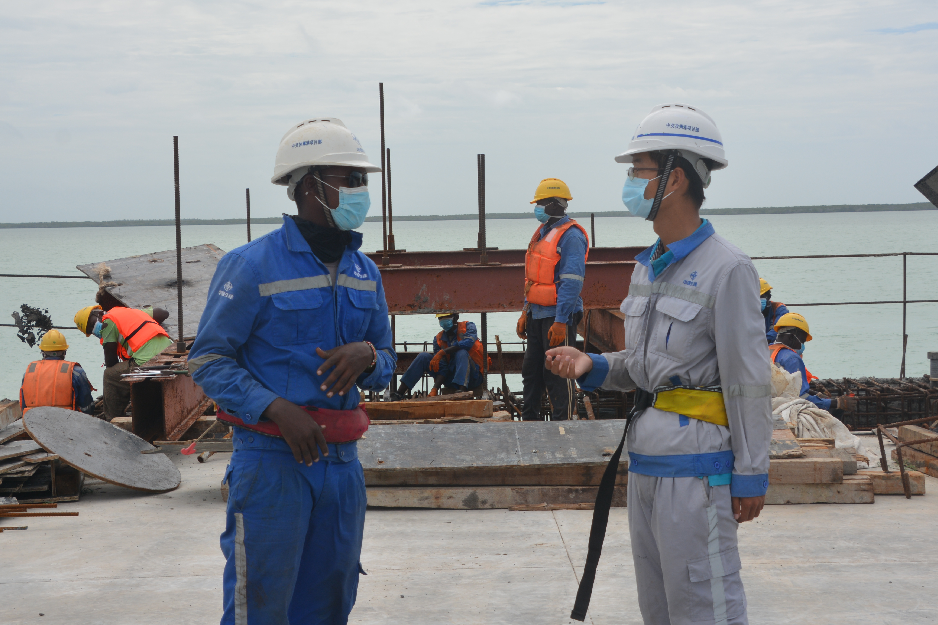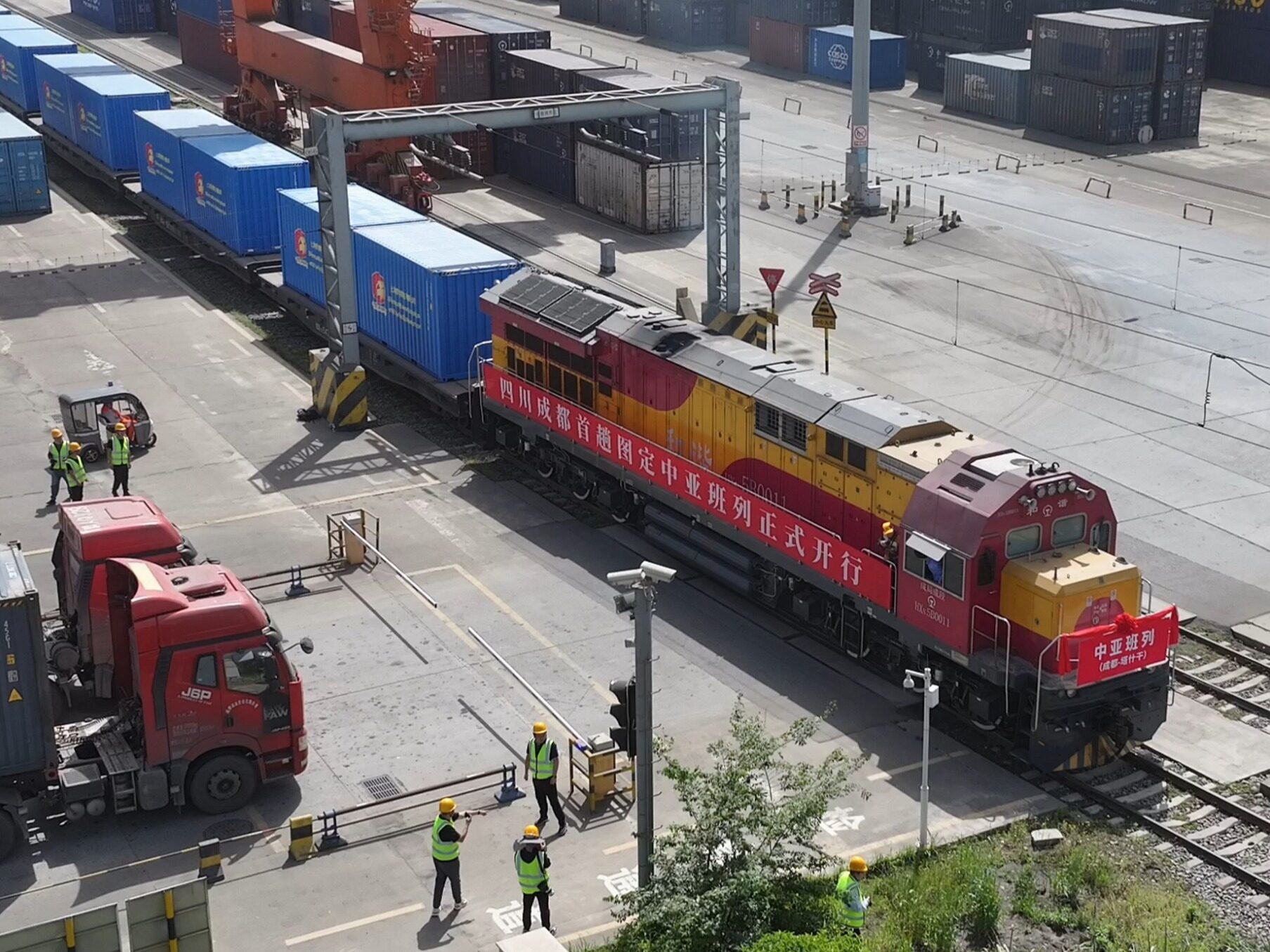- Belt and Road infrastructure projects have contributed to improving local people's livelihood and expanding employment
- In recent years, the wave of anti-globalization has been surging, and the joint construction of the Belt and Road Initiative is China's new plan for the development of globalization

According to statistics, as of January 2023, China has signed more than 200 cooperation documents on the joint construction of the Belt and Road with 151 countries and 32 international organizations.
In terms of foreign direct investment, China’s direct investment in 49 countries along the Belt and Road in 2015 was US$14.82 billion. In 2022, Chinese enterprises’ non-financial direct investment in countries along the Belt and Road will reach US$20.97 billion.
In terms of foreign contracted projects, the number of newly signed contracts for foreign contracted projects increased from 3,987 in 2015 to 5,514 in 2022, and the value of newly signed contracts also increased from US$92.64 billion to US$129.62 billion. In the past ten years, under the vigorous promotion of China and the active participation of countries and regions along the route, the Belt and Road Initiative has become a popular international public product and international cooperation platform in the world today. More and more countries and regions along the route have started to build benefit from.
people-to-people bond
Taking the "hard connectivity" of infrastructure as an important direction, the "soft connectivity" of rules and standards as an important support, and the "heart connectivity" of the people of the co-construction country as an important foundation, this is the third time that General Secretary Xi Jinping will attend the Belt and Road Initiative in 2021. During the construction symposium, it highly condensed and summarized the important achievements made since the Belt and Road Initiative was put forward. "Hard Unicom", "Soft Unicom" and "Mind Unicom", these "three links" comprehensively summarize the basic content and ten-year achievements of the joint construction of the Belt and Road.
Infrastructure interconnection is a priority area for the joint construction of the Belt and Road Initiative, and "hard connectivity" is the foundation. Over the past ten years, infrastructure projects have achieved fruitful results, contributing to improving local people's livelihood and expanding employment. In 2022, the Jakarta-Bandung high-speed railway will be put into trial operation as the first high-speed railway in ASEAN, and the first expressway in Cambodia will be officially opened to traffic. In the first 11 months of 2022, the Western Land-Sea New Corridor rail-sea combined transport trains will increase by 18.9% year-on-year, and the number of China-Europe trains and TEUs will increase by more than 10% and 11% year-on-year respectively, playing a role in ensuring the stability of the international industrial chain and supply chain. It has played an important role and become an important international public product.

Builders are busy at the construction site of the China-Belarus Industrial Park
Strengthening the "soft connectivity" of rules and standards is the key to the high-quality development of the Belt and Road. In recent years, the integration of rules and standards in the fields of economy and trade, investment and financing, and transportation has been solid and effective in the joint construction of the Belt and Road Initiative. In 2022, the Regional Comprehensive Economic Partnership Agreement (RCEP) will come into effect, and China has signed a total of 32 co-construction countries and regions for mutual recognition of certified economic operators (AEO). The level of trade and investment liberalization and facilitation continues to improve. China has signed bilateral investment agreements (BITs) with 56 co-construction countries and regions, and signed double taxation avoidance agreements with 59 co-construction countries and regions. At the same time, China is actively promoting cooperation among countries and regions along the Belt and Road in many fields. More than one-third of key infrastructure projects under construction in countries and regions have adopted Chinese standards.
People-to-people bonds are the cultural foundation for the joint construction of the Belt and Road Initiative. "Heart Connect" not only includes the efforts made in the cultural exchange project, but also the result of improving local people's livelihood through infrastructure investment and construction. In the past ten years, while directly absorbing local employment, China has exported advanced technology and management experience to countries and regions along the route, cultivated a large number of skilled and management talents, improved the skills of local laborers, and promoted employment and income. The joint construction of the Belt and Road has laid a solid foundation of public opinion.
Closely linked to global development
The joint construction of the Belt and Road Initiative has become an important driving force for the inclusive growth of the global economy. The Belt and Road Initiative represents a new model of global economic governance. Based on the principle of extensive consultation, joint contribution and shared benefits, it provides an equal and mutually beneficial economic cooperation platform, enabling underdeveloped countries and regions to freely and equally participate in international cooperation and competition. , which is also a key issue to improve the inclusiveness of global economic growth. The core of inclusive growth is to eliminate poverty and share prosperity, and the joint construction of the Belt and Road Initiative provides a path to inclusive globalization, taking into account the development needs of ordinary people to the greatest extent. The joint construction of the Belt and Road Initiative has been promoted for ten years, allowing infrastructure to extend to more countries and regions, and economic growth to benefit more people.
The joint construction of the Belt and Road Initiative has provided new ideas for globalization. In recent years, the wave of anti-globalization has continued to surge, the world economy has sluggish growth, and the gap in public goods has widened. The trend of economic globalization has become a crucial global governance issue. The former promoters of globalization have become supporters of anti-globalization. Developing countries represented by China have begun to realize that globalization requires new ideas and new directions. plan. The achievements of the ten-year construction have confirmed the globalization advocated by the joint construction of the Belt and Road with the concept of openness, inclusiveness, mutual benefit and win-win, respect for the globalization of diversified development models, actively play the guiding role of the government, and promote the globalization of social fairness. increasingly recognized by the international community.

The interior view of the main workshop of the Sujijinari Hydropower Station Project
The joint construction of the Belt and Road Initiative has established a new paradigm for global economic cooperation. The joint construction of the Belt and Road Initiative is the top-level design of China's diplomacy. It focuses on economic development, does not engage in geopolitics, does not engage in exclusive cliques, and focuses on policy docking and mechanism building with other countries. As of the end of 2021, Chinese companies have invested more than US$43 billion in overseas economic and trade cooperation parks in countries and regions that have jointly built them, creating more than 340,000 local jobs; The cumulative value of regional trade in goods is about 12 trillion US dollars. As a new paradigm of sustainable international cooperation that upholds the concept of openness, inclusiveness, mutual benefit and win-win results, the joint construction of the Belt and Road Initiative provides more options and methods for international cooperation, increases the diversification and diversity of international exchanges, and will also Contribute more lasting momentum to global development.
The high-quality joint construction of the Belt and Road Initiative has provided new content for global sustainable development. Since the United Nations General Assembly adopted the "2030 Agenda for Sustainable Development" in 2015, the joint construction of the Belt and Road Initiative has actively aligned with the United Nations' 2030 Sustainable Development Goals. The joint construction of the Belt and Road has helped countries and regions along the route to implement a large number of road, railway, airport, port and other projects. The construction of "six corridors and six roads, multi-country and multi-port" has made important progress, and the formation of a three-dimensional infrastructure network has been accelerated. In promoting the "Healthy Silk Road", "Digital Silk Road" and "Green Silk Road", we will continue to strengthen the construction of multilateral cooperation platforms under the framework of the Belt and Road Initiative, and earnestly implement the principle of "high standards, sustainability, and benefiting people's livelihood". Construction principles, especially in the construction of the "Green Silk Road", strictly abide by the "host country standards". In the "Opinions on Promoting the Green Development of the Belt and Road Initiative" jointly issued by the National Development and Reform Commission and other four departments in 2022, the relevant requirements of "encouraging enterprises to carry out environmental protection work in accordance with international standards or China's higher standards" were further put forward.
The joint construction of the Belt and Road has become an important practical platform for building a community with a shared future for mankind. Facing the current failure of global governance, the international community urgently needs new theoretical and enlightening ideas and new governance methods to unite people and gather strength. The proposal of a community with a shared future for mankind is of great significance to global development, and the Belt and Road Initiative is an important practical platform for building a community with a shared future for mankind. After ten years of practice, the "five links" - policy communication, facility connectivity, unimpeded trade, financial integration and people-to-people bonds have promoted the multi-field and multi-level interconnection of countries and regions that jointly build the Belt and Road Initiative, reached cooperation and consensus, and promoted Communication and exchanges, gradually began to build a community of political mutual trust, economic integration, and cultural tolerance, and gradually began to promote regional integration and globalization, which laid a solid foundation for building a community of shared future for mankind.
In 2023, the joint construction of the Belt and Road Initiative will surely start a new journey and contribute more to the development of wider, higher-level, and deeper-level international cooperation, as well as the vivid practice of promoting global development and building a community with a shared future for mankind.Editor/Ma Xue
Comment
 Praise
Praise
 Collect
Collect
 Comment
Comment
 Search
Search














Write something~